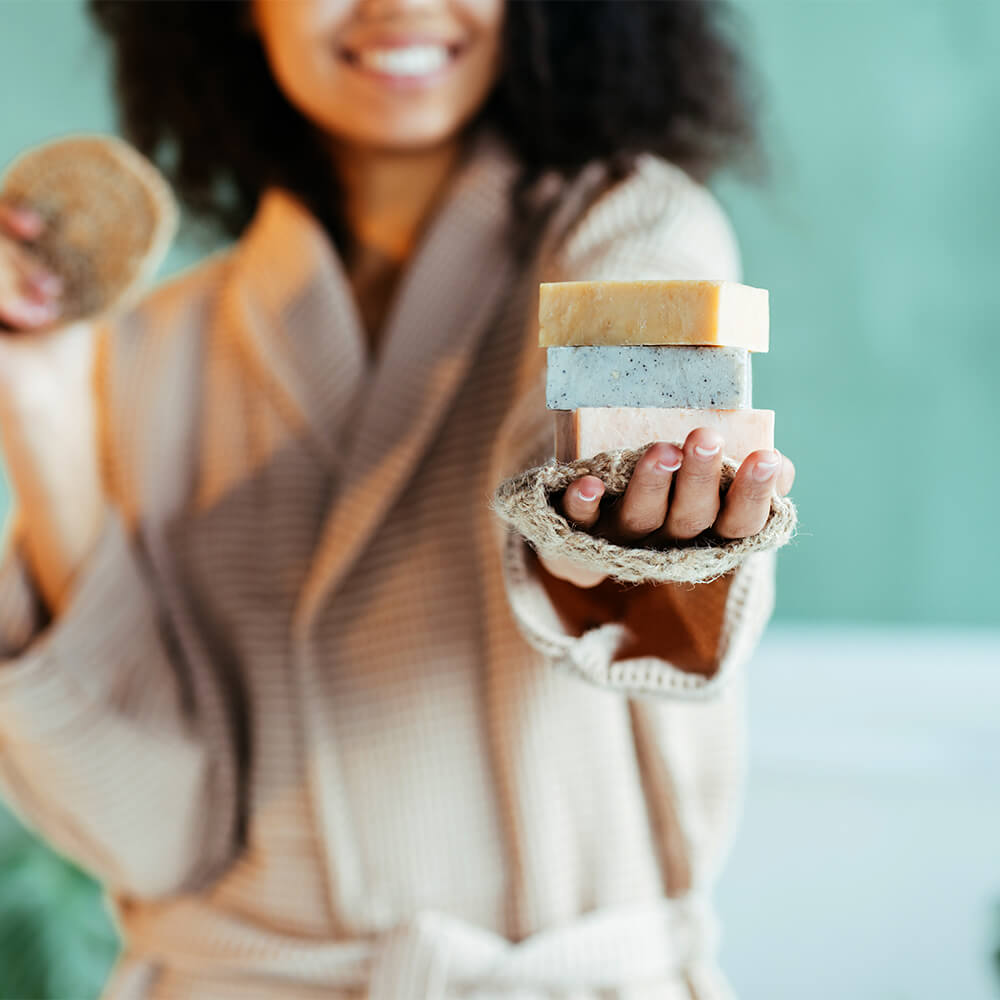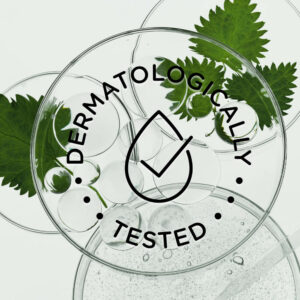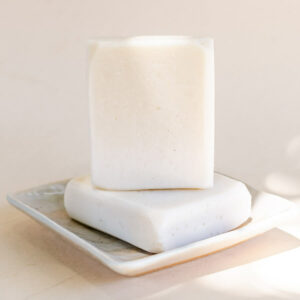
Solid, liquid, flakes, scented, moisturising, black, marseille, artisanal… Soap is indispensable: there are a myriad of names to define it and it is available in many forms and for various uses. In Europe, every year, more than 850 thousand tons of soap are produced: Italy, England, Germany and France share 90% of the market. In Italy, 3.3 kilos of soap are consumed per second, for a total of 1.6 kilos of soap per year per capita.
The origins of the word soap are much debated. Some claim that the word comes from the Latin word sapo, others from the Greek word sapon. Others believe that the term refers to the city of Savona, where the first soap factory in history was built. Legend has it, however, that soap took its name from the birthplace, Mount Sapo, located near Rome, where the Romans made animal sacrifices, pouring streams of animal fat mixed with ash towards the nearby stream, where the inhabitants of the neighbouring village used to wash their clothes.
Soap is prepared by combining fats of vegetable origin (coconut, palm, etc.) with alkaline substances, which create the reaction that is called saponification. Its components have the property of forming a foam and an emulsion.
Soap is available in different formats, depending on the use for which it is intended.
- Solid soap: it is a bar that can be of different shapes (rectangular, oval, round, cubic, etc). It is also called toilet soap, because it can be placed easily on the edge of the sink.
- Liquid soap: it makes certain uses easier, such as washing floors or dishes. It also becomes a shower gel or hand cleansing cream.
- Soap flakes: it must be diluted in hot water and is used to wash floors and linen.
- Powdered soap: it is used for household appliances or for laundry.
- Mousse soap: the most common use is in shaving foam.
The advantages and benefits of soap, especially solid soap, are many.
- It is inexpensive: the price per kilo of solid soap is lower than liquid one. Furthermore, solid soap lasts longer than liquid soap: a 250 gramme bar of soap allows for, on average, 60 uses.
- It is a cosmetic product: soap brands produce hypo-allergenic formulas, often recommended by dermatologists.
- It is ecological: it is made with natural, non-polluting ingredients that degrade easily. It is, therefore, completely biodegradable. Solid soap generally does not use plastic packaging (which translates into an additional measure of environmental protection) and allows for zero waste.
- It is versatile: it can be used for the body and hair, but also for linen and for the home. A single product with many uses. Furthermore, solid soap is easily to transport and, in the case of travel by plane, there are no capacity limits.

Solid soap
Solid soap ensures and reassures. This is, essentially, the observation made by traditional soap brands.
Albogroup, an Italian company that, since 1977, has been developing collections of soaps for retail and hotels, also using ingredients linked to the territory (chinotto, orange, grapevine, olive oil, etc): essences and fragrances that fully becom part of the formulations.
In recent years, the awareness campaigns regarding the respect for the environment and the development, also in Italy, of an eco-sustainable culture have caused, as a result, an increase in solid soap sales and a multiplication of distribution.
Replaced for a long time by liquid soap, the classic solid soap is therefore making a strong comeback in consumers’ baskets. A trend that is giving a new vitality to the segment.
The reasons are mainly 4. Consumers:
- have become more wary of the undesirable substances contained in shower gels
- ask for more authenticity
- pay more attention to savings: solid soap lasts longer than liquid soap
- appreciate the ecological aspect: solid soap does not have plastic packaging
- are intrigued by novelties: there are, in fact, also high-end solid soaps or soaps manufactured according to the criterion of territoriality (this concept recalls that of local sources)
The attraction for quality soap with beneficial active ingredients is, in short, a growing trend because it is linked to the search for safe products.

Liquid soap
Although it has dominated consumption for decades, liquid soap seems destined to lose ground, in terms of consumer preferences. The widespread opinion is that it does not respect the planet enough (due to its plastic packaging) and not even the skin, due to the content of preservatives. Furthermore, there is also an economic aspect: basically, liquid soap lasts half as long as soap bars, and its cost increases together with the crisis of raw materials (mainly plastic) necessary for its packaging. Lastly, duration is another negative point: liquid soap, in fact, lasts less than solid soap and its properties are diluted in water and, therefore, less effective. These are the reasons why soap bars are back in fashion. Cosmetics has made it a real self-care product, perfect for all uses.
Contact us for more information
Sulphur soap
Its benefits have long been known. Already in ancient times, it was used to fight skin inflammation and itching. Its composition is based on the ancestral knowledge of plants and their natural benefits. A sworn enemy of acne, it is also indicated in case of eczema and dermatitis, to improve the appearance of the skin and reduce itching.
Marseille soap
It bears the name of the French city where it was born: it is perfect for hands, face and body, but it is also appreciated for cleaning linen and for protection against moths. Marseille soap is known to be free of allergens, making it perfect for the hygiene of children and people with sensitive skin (its bactericidal properties have helped to reduce the infant mortality rate since the 19th century). Its name reflects more a production process than a city of origin. In fact, Marseille soap is made up of at least 72% fats, olive oil, palm oil and coconut oil and is free from animal fats and synthetic additives.

Clay soap
There are over 4 thousand clays in the world. They give soaps a natural colour but, above all, they are rich in active ingredients that have beneficial properties for the skin:
- green clay: ideal for oily skin. It has absorbing and regulating properties on excess sebum.
- pink clay: has nourishing and softening properties. It is effective on irritated skin or scalp.
- yellow clay: it is cleansing and purifying, perfect for skin that produces excess sebum.
- brown clay or ghassoul: it is a saponiferous or purifying clay. It is found only in Morocco and, for this reason, it is considered precious.
- white clay: also known as kaolin, it has fortifying properties. It is ideal for dry, sensitive and atopic skin.
- red clay: it is rich in iron and trace elements. It is perfect for restoring brightness.
- blue clay: it owes its colour to the content of silica and natural pigments. It eliminates impurities, it repairs and soothes damaged and irritated skin.
- grey clay: also called bentonite, it absorbs up to 10 times its weight in water.
Aleppo soap
Its name derives from its origins: the city of Aleppo, in Syria. It was introduced in Europe starting from the 12th century, at the time of the Crusades. It is a thousand-year old soap that is made using a hot saponification method and specific ingredients (olive oil, vegetable soda and bay leaf oil), added before the drying phase. These peculiarities make Aleppo soap an ideal cleanser for face and body. It is prized for its moisturising and softening properties, but also renowned for its beneficial effects on acne, eczema and psoriasis, scars and stretch marks.
It is perfect for cleaning clothing intended for sensitive and reactive skin: applied dry, it soothes insect bites and, if put in closets, it protects clothes from moths.
This soap is believed to increase in quality with ageing. Therefore, it has no expiration date.
Solid detergent
Low cost, but above all ecological, the soap bar has made a powerful entry into the beauty sector for some years, giving life to solid zero waste cosmetics, respectful of the environment and, above all, transparent in the compositions. A return to the origins with a decidedly essential feeling.




